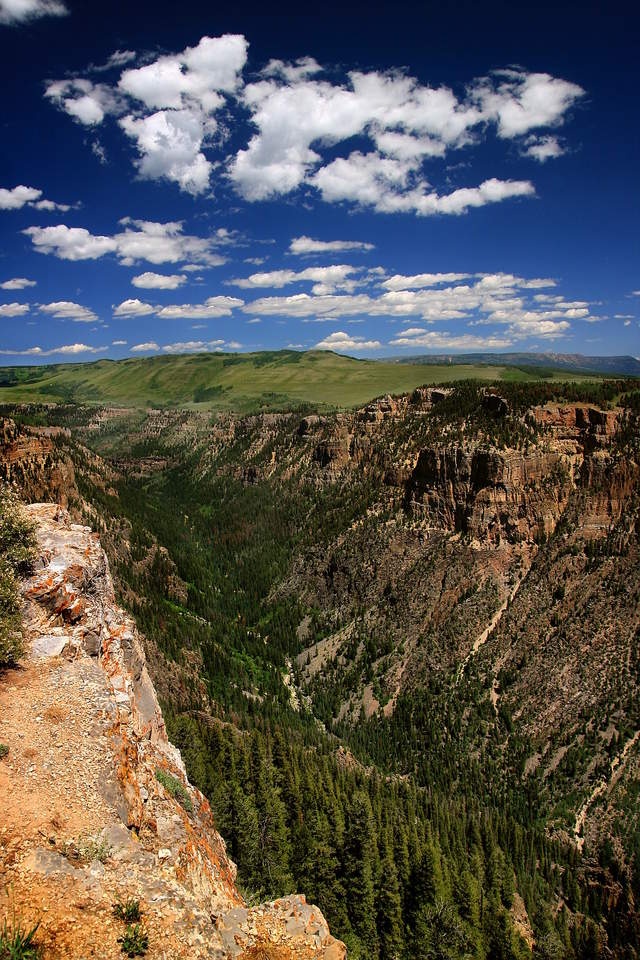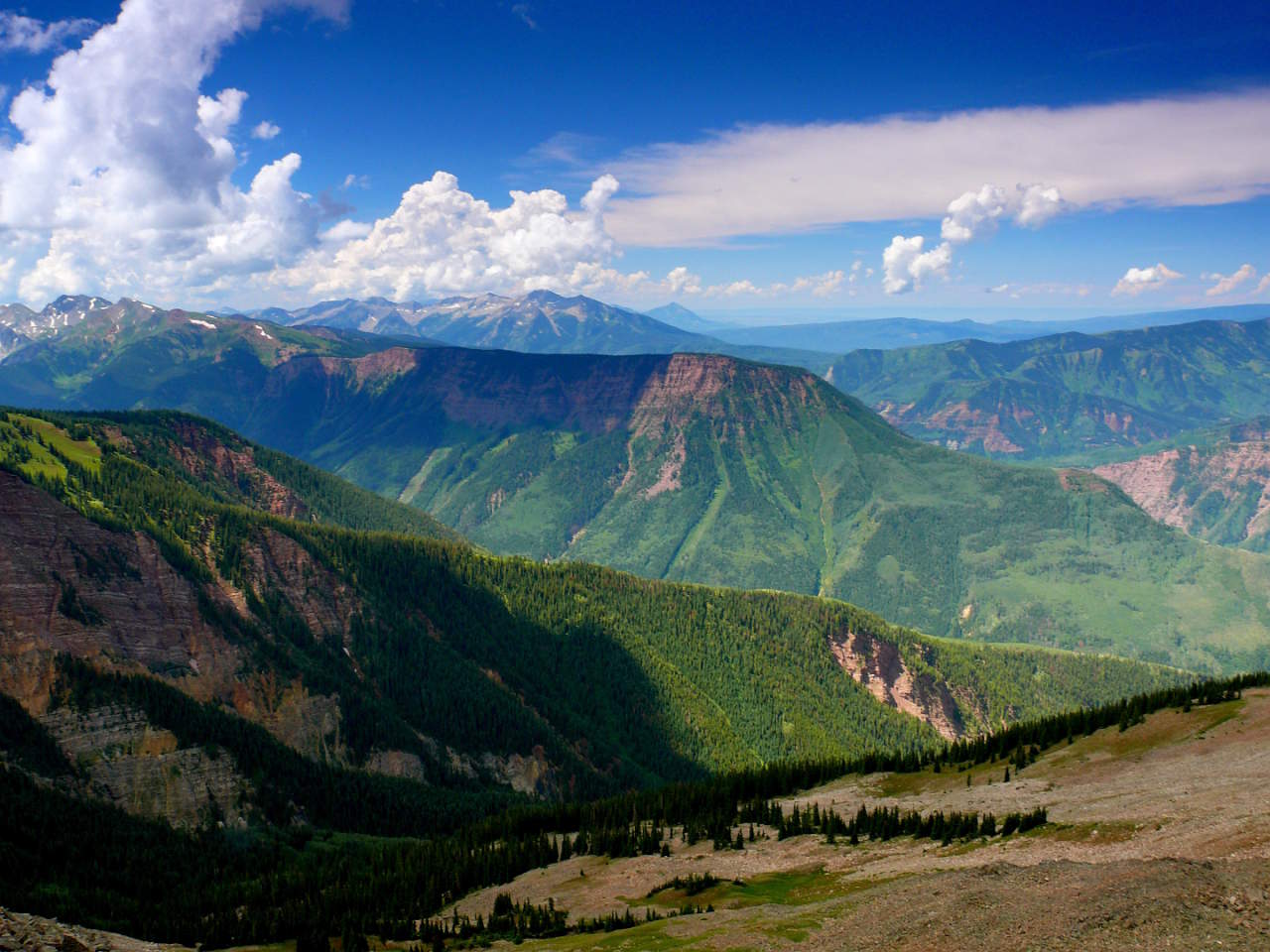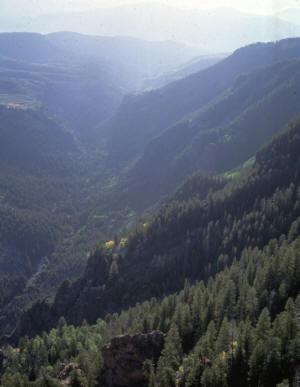If your serious about big game hunts,your eventually going to find yourself hunting totally new areas your not familiar with,
it helps to take a practical approach and get out some topographical maps of any area you intend to hunt, to get a basic idea of the area contours and major features.
If you have time before a hunt ,a call to the local fish & game department and local biologist , to get a few tips and info sure can not hurt.
EXAMPLE
on my first hunt to COLORADO
I decided to look over the area near the white river national forest near ,but to the north west of gypsum Colorado,near deep creek, it was selected based on research, on many factors but a large area, lots of game and reasonably low hunt pressure and fairly high success rates were important.
Keep in mind most GOOD PUBLIC ACCESS areas only have about a 20% success rate, for ELK and maybe 40% on mule deer.
carry lots of water and aspirin, Excedrin etc. as altitude sickness is common and a real P.I.T.A., head aches , nausea ,are real and common youll feel like crap for the first 24-36 hours, you likely to have a killer headache, but drink lots of liquids and take pain killers and it slowly passes so don,t let it end your hunt, and DON,T GET STUPID and push yourself hard at those altitudes, just find a decent place to sit and watch a narrow canyon, or a natural travel choke point and glass the area if you feel out of breath or overly tired, once your in a good area,many guys find that sitting and glassing every 15-30 minutes for an hour or so,is more effective than constantly still hunting because its hard to carefully inspect an area if your having a difficult time just breathing and your exhausted
these links should help
http://www.wildernet.com/pages/area.cfm ... l%20Forest
http://www.wildernet.com/pages/area.cfm ... 04&CU_ID=1
http://www.hookandbullet.com/fishing-de ... gypsum-co/



these pictures are of the area I hunt or areas similar in appearance
based on many game density charts, limited private land boundary,s and limited road access, limits on vehicle use,off road. number of permits, season length, and topo maps of the area, and I was not disappointed.
on key I found consistently is that limited road access ,limits on vehicle use,off road. and steep, or rolling terrain limits the distance most hunters are willing to walk into an area.
if theres a natural barrier like a few narrow canyons or streams that's even better at limiting your competition
but no mater what physical shape you THINK your in, before the hunt, it won,t be as good as your assuming it is!
READ THIS THREAD ALSO
viewtopic.php?f=97&t=1095
viewtopic.php?f=92&t=1275
https://elknetwork.com/5days/?utm_medium=notification&utm_source=popup
we selected the area after several discussions with game department personnel after explaining what we were looking for in a hunt area.
ok once we drove into the area, from Florida, we had planed on camping with the two trucks, and a pop-up camper that the 5 of us in our group had, it took us 40 hours driving from florida ,driving strait thru in 4-6 hour shifts,we located a large camp site near where we had researched to hunt.
we set up camp in a designated camp ground and went exploring by driving the roads and looking over the topo maps to get a feel for the area, it quickly became obvious that many of the areas would become far more heavily hunted because the camp site areas tended to be clustered, once we eliminated those areas from consideration we looked for areas deer and ELK would naturally find far less busy, we scouted some of those areas, and found several great expanses of rolling timber cut with narrow canyons.
we eventually developed a hunt style with two-four man loose teams hunting areas so that we could help each other recover and process and pack out game ,once game was down, as we typically found the hunting once we were at least a full mile off any logging road to be far more productive, and game much easier to locate,, but that required back-packing into the areas the night before and letting the guys who walk into the outer ares drive much of the game past or into our areas, while we slowly combined watching the obvious exit routes and slow still hunts thru the timber which eventually proved to be reasonably effective.
you'll quickly learn to carry as little as possible and to make darn sure you've got a quality warm,sleeping bag and a decent size tent or tarp if the weather tuns to crap., youll also learn not to shoot the first ELK you see, as that just limits your hunt time and chances at a bigger elk that youll usually only see later in the hunt.
after several years of hunting the area which is about 200 plus sq miles of hunt area and private land in a huge patch work, of mostly national forest and BLM land,we had barely scratched the surface but we had become much more familiar with the area.
some of my best memories are just of sitting on a ridge, over a mile from any access road ,under a conifer ,far up one side of a canyon,watching a narrow canyon floor and opposite slope as elk browsed by. talking with other hunters that "had hunted the area for years" we frequently heard the area was "PRETTY WELL SHOT OUT" but we found that it was more a mater of how much effort your willing to expend and distance your willing to pack an ELK out from that determined success.
it helps to take a practical approach and get out some topographical maps of any area you intend to hunt, to get a basic idea of the area contours and major features.
If you have time before a hunt ,a call to the local fish & game department and local biologist , to get a few tips and info sure can not hurt.
EXAMPLE
on my first hunt to COLORADO
I decided to look over the area near the white river national forest near ,but to the north west of gypsum Colorado,near deep creek, it was selected based on research, on many factors but a large area, lots of game and reasonably low hunt pressure and fairly high success rates were important.
Keep in mind most GOOD PUBLIC ACCESS areas only have about a 20% success rate, for ELK and maybe 40% on mule deer.
carry lots of water and aspirin, Excedrin etc. as altitude sickness is common and a real P.I.T.A., head aches , nausea ,are real and common youll feel like crap for the first 24-36 hours, you likely to have a killer headache, but drink lots of liquids and take pain killers and it slowly passes so don,t let it end your hunt, and DON,T GET STUPID and push yourself hard at those altitudes, just find a decent place to sit and watch a narrow canyon, or a natural travel choke point and glass the area if you feel out of breath or overly tired, once your in a good area,many guys find that sitting and glassing every 15-30 minutes for an hour or so,is more effective than constantly still hunting because its hard to carefully inspect an area if your having a difficult time just breathing and your exhausted
these links should help
http://www.wildernet.com/pages/area.cfm ... l%20Forest
http://www.wildernet.com/pages/area.cfm ... 04&CU_ID=1
http://www.hookandbullet.com/fishing-de ... gypsum-co/


these pictures are of the area I hunt or areas similar in appearance
based on many game density charts, limited private land boundary,s and limited road access, limits on vehicle use,off road. number of permits, season length, and topo maps of the area, and I was not disappointed.
on key I found consistently is that limited road access ,limits on vehicle use,off road. and steep, or rolling terrain limits the distance most hunters are willing to walk into an area.
if theres a natural barrier like a few narrow canyons or streams that's even better at limiting your competition
but no mater what physical shape you THINK your in, before the hunt, it won,t be as good as your assuming it is!
READ THIS THREAD ALSO
viewtopic.php?f=97&t=1095
viewtopic.php?f=92&t=1275
https://elknetwork.com/5days/?utm_medium=notification&utm_source=popup
we selected the area after several discussions with game department personnel after explaining what we were looking for in a hunt area.
ok once we drove into the area, from Florida, we had planed on camping with the two trucks, and a pop-up camper that the 5 of us in our group had, it took us 40 hours driving from florida ,driving strait thru in 4-6 hour shifts,we located a large camp site near where we had researched to hunt.
we set up camp in a designated camp ground and went exploring by driving the roads and looking over the topo maps to get a feel for the area, it quickly became obvious that many of the areas would become far more heavily hunted because the camp site areas tended to be clustered, once we eliminated those areas from consideration we looked for areas deer and ELK would naturally find far less busy, we scouted some of those areas, and found several great expanses of rolling timber cut with narrow canyons.
we eventually developed a hunt style with two-four man loose teams hunting areas so that we could help each other recover and process and pack out game ,once game was down, as we typically found the hunting once we were at least a full mile off any logging road to be far more productive, and game much easier to locate,, but that required back-packing into the areas the night before and letting the guys who walk into the outer ares drive much of the game past or into our areas, while we slowly combined watching the obvious exit routes and slow still hunts thru the timber which eventually proved to be reasonably effective.
you'll quickly learn to carry as little as possible and to make darn sure you've got a quality warm,sleeping bag and a decent size tent or tarp if the weather tuns to crap., youll also learn not to shoot the first ELK you see, as that just limits your hunt time and chances at a bigger elk that youll usually only see later in the hunt.
after several years of hunting the area which is about 200 plus sq miles of hunt area and private land in a huge patch work, of mostly national forest and BLM land,we had barely scratched the surface but we had become much more familiar with the area.
some of my best memories are just of sitting on a ridge, over a mile from any access road ,under a conifer ,far up one side of a canyon,watching a narrow canyon floor and opposite slope as elk browsed by. talking with other hunters that "had hunted the area for years" we frequently heard the area was "PRETTY WELL SHOT OUT" but we found that it was more a mater of how much effort your willing to expend and distance your willing to pack an ELK out from that determined success.
Last edited by a moderator:
